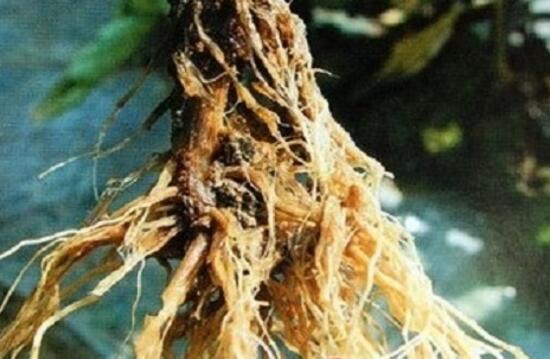The breeding method of Rhizoma Rehmanniae
Rhizoma Rehmanniae is a perennial herb of Compositae, its root system can be used as medicine, with heat-clearing and detoxification, relaxing muscles and dredging pulse effect, high nutritional value, can treat a variety of diseases, is the raw material of many proprietary Chinese medicines. So how does Rhizoma Rehmanniae reproduce? Let's take a look at it with the editor.

1. Seed propagation
When the seeds mature in summer every year, the mature seeds will be collected and ready for sowing at the end of June. Because the oil layer on the surface of the seeds is thick, it is necessary to soak seeds and accelerate germination. First of all, soak the seeds in warm water for 2-3 days, change the water every day, use a scarf to accelerate germination in an environment of 25-30 degrees, and rinse once a day until the seeds are white. Pour water thoroughly on the prepared seedbed, then spread the seeds evenly over it and cover the soil with 1-1.5 cm. Shading and avoiding the sun, seedlings can emerge in about 7-10 days.
2. Ramet propagation
Dig out all the roots of the plant and divide them into several plants according to the number of buds. Each root system is required to have 1-3 buds. The separate plants can be planted separately, and after planting, they should be watered once and shaded, and they can survive in about 5-10 days. the seedlings propagated by ramets not only grow strong and develop fast, but also perfectly inherit the advantages of the mother plant. will not cause variety degradation.
3. Cuttage propagation
Cutting propagation can be divided into buds and branches. Bud cutting means that foot buds often sprout along the heel of the mother plant. When their leaves are expanded, they can be cut off for cutting, and the survival rate is high, while the ramet is similar. The more the branches are generally inserted in 4-5, cut off about 10 cm in length of the branches of the mother plant with 5-7 leaves as cuttings, remove the lower leaves of the cuttings, leave only a few upper leaves, flatten the lower end, use other branches to make a hole in the ground, and carefully insert the cuttings into the hole so as not to damage the outer skin. The cutting depth is about 3-5 cm. After cutting, the soil is compacted and watered thoroughly, the temperature is kept at about 15-20 days, and the seedlings can take root and survive in 15-20 days. When the seedlings grow 3-5 true leaves, they can be transplanted.
The above is the introduction of the breeding method of Rhizoma Rehmanniae, hope to help you, want to know more related knowledge, please follow us.
- Prev

What's wrong with the rotten roots of Camellia oleifera? overwatering, fertilizing and fertilizing too often / potted soil is the key.
Tea plum, with its beautiful leaves, bright and beautiful flowers, is welcomed and loved by the broad masses of people, and is kept at home by many people. However, in the process of breeding, many flower friends often encounter rotten roots, that tea plum rotten roots is how to return a responsibility? How to treat the rotten root of tea plum? In this regard, it is up to the editor to solve the doubts for everyone.
- Next

Planting technique of Rhizoma acuminata
Planting technique of Rhizoma acuminata
Related
- Fuxing push coffee new agricultural production and marketing class: lack of small-scale processing plants
- Jujube rice field leisure farm deep ploughing Yilan for five years to create a space for organic food and play
- Nongyu Farm-A trial of organic papaya for brave women with advanced technology
- Four points for attention in the prevention and control of diseases and insect pests of edible fungi
- How to add nutrient solution to Edible Fungi
- Is there any good way to control edible fungus mites?
- Open Inoculation Technology of Edible Fungi
- Is there any clever way to use fertilizer for edible fungus in winter?
- What agents are used to kill the pathogens of edible fungi in the mushroom shed?
- Rapid drying of Edible Fungi

